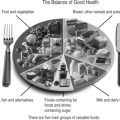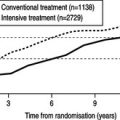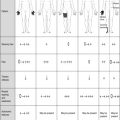Why identify people with type 2 diabetes?22
The oral glucose tolerance test 25
Impaired glucose tolerance and impaired fasting glucose 27
Psychological aspects of diagnosis of type 2 diabetes 29
Screening programmes for diabetes 29
The OGTT as a screening test 33
Advice for the person after a screening test 34
Public awareness of diabetes 34
Conclusion 35
References 35
INTRODUCTION
It is known that there is a world epidemic of diabetes and projections have been made that there will be 2.9 million people with diabetes by the year 2010 (Amos et al 1997). As will be clear from Chapter 1, about 80% of these people will have type 2 diabetes, which presents a major challenge to any healthcare system.
Most healthcare professionals would have no difficulties in diagnosing diabetes in a person presenting with the classic symptoms of type 1 diabetes of polyuria, polydipsia, weight loss and tiredness. In such people, the diagnosis is easily confirmed by a clearly elevated blood glucose level confirmed by laboratory testing (Box 2.1) and appropriate treatment commenced. Similarly, it is easy to identify people who clearly do not have diabetes by finding a random plasma glucose below 5.5 mmol/L. Problems most frequently arise when a person is found to have glucose levels between 7.0 mmol/L and 11.1 mmol/L and does not complain of any of the usual signs and symptoms of diabetes.
Box 2.1
Diagnosing diabetes in the person with clinical symptoms
Diagnosing diabetes is clear where there are clinical symptoms and unequivocally elevated blood glucose. Patients with:
▪ symptoms and a random plasma glucose of 11.1 mol/L or above or
▪ a fasting plasma glucose > 7.0 mol/L or above have diabetes as defined by the World Health Organization (WHO 1999).
Diagnosing type 2 diabetes is often more problematic because the onset is very gradual and a person can have diabetes for many years before presenting with complications of the disease (Harris et al 1992, United Kingdom Prospective Study Group (UKPDS) 1998). Hence the challenge to the healthcare team is to identify people with type 2 diabetes before they present with complications of the disease.
WHY IDENTIFY PEOPLE WITH TYPE 2 DIABETES?
Undiagnosed diabetes is not a benign condition. It carries with it costs to the individual – through the onset of complications – and costs to the healthcare system in the treatment of these. Therefore, to diagnose type 2 diabetes prior to complications arising seems a sensible way forward. Coupled with this, the costs of managing people with diabetes globally can be measured in clinical costs, indirect costs and the costs to carers on looking after people with diabetes (WHO 2004). Costs to the UK NHS vary between 8.7% of acute sector costs (Currie et al 1997) to 4.1% for type 2 diabetes alone (Williams et al 2001).
Although the prevalence of type 2 diabetes increases with age, it is now recognised in teenagers (Peters & Davidson 1992, Sinha et al 2002). The UKPDS (1998) found that up to 50% of people presented at diagnosis of diabetes with established complications, particularly retinopathy, indicating that they had diabetes for as long as 12 years. Diabetes remains the leading cause of blindness in working age adults, of end-stage renal disease and of non-traumatic lower extremity amputations; in addition it produces a 2- to 4-fold increase in cardiovascular risk. It is also recognised that mortality rates are higher in the population of people with diabetes whether diagnosed with diabetes or not than in the non-diabetic population (Jarrett & Shipley 1988). Hence the morbidity associated with type 2 diabetes is costly for the individuals concerned.
A random plasma glucose equal to, or exceeding, 11.1 mmol/L is usually indicative of diabetes but a diagnosis should not be made on the basis of only one abnormal finding in the absence of clinical symptoms (WHO 1999). Fiona will be informed that she has diabetes if she has one additional glucose test on another day with a value in the diabetic range (Box 2.2). It is strongly recommended that only plasma venous samples are used to diagnose diabetes (Table 2.1).
Box 2.2
Criteria for diagnosing diabetes in the person without clinical symptoms
A person who is found to have an elevated blood glucose but who does not present with clinical symptoms needs to have two biochemical results on two separate days above the stated range before the diagnosis of diabetes can be made. Results must be one of the following:
▪ A random venous plasma glucose at any time of day regardless of last food intake that is ≥ 11.1 mmol/L
▪ A fasting plasma glucose ≥ 7.0 mmol/L
▪ A 2 hour plasma glucose ≥ 11.1 mmol/L at 2 hours after 75 g glucose in an oral glucose tolerance test
| Patient state | Glucose concentration (mmol/L) | |||
|---|---|---|---|---|
| Whole blood | Plasma | |||
| Venous | Capillary | Venous | Capillary | |
| Fasting | > 6.7 | > 6.7 | > 7.8 | > 7.8 |
| 2 hours after 75 g glucose load | >10.0 | >11.1 | >11.1 | >12.1 |
Fiona’s case study is not uncharacteristic, as people usually present in primary care with other associated medical conditions. The primary healthcare team (PHCT) should be alert to the possibility of undiagnosed diabetes hindering a person’s anticipated recovery, e.g. the slow-to-heal leg ulcer. Likewise, members of the PHCT attending people with a sore toe, vaginal or penile thrush, blurred vision, boils and carbuncles or complaints of weight loss must be proactive in their role to assist in the early detection of diabetes. The PHCT should be aware of the risk factors for developing type 2 diabetes that are frequently associated with undiagnosed diabetes (Box 2.3). These risk factors are only pertinent to the person with type 2 diabetes.
Box 2.3
Risk factors for developing type 2 diabetes
▪ Family history of type 2 diabetes
▪ Obesity, with a body mass index in excess of 25
▪ Increasing age over 40 years
▪ Hypertension or significant hyperlipidaemia
▪ Black and ethnic minorities
▪ Gestational diabetes
▪ Any woman with a history of delivering babies weighing over 4 kg
▪ Women with polycystic ovary syndrome who are obese
▪ People known to have impaired fasting glycaemia
▪ People known to have impaired glucose tolerance
▪ Hypertension or hyperlipidaemia
THE ORAL GLUCOSE TOLERANCE TEST
The oral glucose tolerance test (OGTT) remains the definitive standard for diagnosing diabetes despite the concerns expressed regarding its poor reproducibility and the fact that it is subject to a wide variety of influences (Yudkin et al 1990). The OGTT is still recommended if there is any doubt about the diagnosis (Vaccaro et al 1999, WHO 1999). As a test, however, it is time consuming for the person, can be rather unpleasant and can be quite inconvenient for both people and staff.
It should be remembered that the OGTT is conducted only where there is an equivocal blood glucose result in the absence of any symptoms. It is usually performed within general practice; those hospitals involved in administering the test do so on an outpatient basis. Educating the person before the test is essential as several factors can influence its reproducibility (Box 2.4). This is usually done by nursing staff and can be reinforced by literature. It is important that the person knows who to contact with any queries regarding the test as it can be seen that many factors can influence the result.
Box 2.4
Factors that influence the oral glucose tolerance test
▪ Prolonged bed rest
▪ Restricting diet prior to the test
▪ The length of time in a true fast prior to the test
▪ Any intercurrent illness
▪ Medication that the person may be taking
▪ Smoking prior to or during the test
PROCEDURE
The OGTT should be postponed if the person is unwell or has had a prolonged period of bed rest before the test. The person should take his or her normal diet for 3 days before the test; it is important that diet is not altered prior to the OGTT. The person should fast overnight for 10–16 hours prior to the test, although water may be drunk. The OGTT should be performed in the morning and the person advised not to smoke the night before the OGTT, immediately prior to or during the test. The healthcare professional responsible for the OGTT should record any factor that might influence the interpretation of the results (Box 2.4).
After the test, a return appointment should be made to discuss the results and the person goes home. No particular aftercare is required and the person should be advised to live their life as normal until the return visit.
INTERPRETING THE RESULTS
The WHO criteria for diagnosing diabetes were developed over many years and included research carried out both in the UK and in the USA (WHO 1999). These studies found that people who had a glucose level ≥ 11.1 mmol/L 2 hours after a glucose challenge were at greatest risk of developing microvascular complications of diabetes, primarily retinopathy (Harris 1993), whereas both fasting and postprandial glucose are associated with an increased risk of cardiovascular disease. The criteria used for diagnosing diabetes are outlined in Table 2.1.
Kahlil (in case study 2.2) will not have diabetes if none of his glucose samples exceeds the levels in Table 2.1. He would, however, be advised about his food intake and encouraged to undertake a weight-reduction programme. He would also be advised about taking some exercise to help with his weight management. Due to his family history, his obesity and his ethnic origins, he would be advised to have a screening test for diabetes every 3 years.
Case study 2.2
Kahlil is a 42-year-old business man who has attended his general practitioner for a medical examination for his health insurance. A random blood glucose is 11.5 mmol/L and, as both his parents have type 2 diabetes and the family are of Asian origin, Kahlil is at high risk of developing type 2 diabetes. His body mass index is 27 and he admits that his working day is mainly sedentary; he takes little exercise and frequently has business lunches during the week.
Another scenario is where only one of Kahlil’s results is abnormal. Take, for example, a fasting plasma glucose of 6.0 mmol/L but a 2-hour plasma glucose of 12.1 mmol/L. The second result is clearly within the diabetic range, but Kahlil does not have clinical symptoms of diabetes. In this instance it is recommended that a second result is acquired on another day and both results would be compared. The second result could be obtained from a random sample or repeat OGTT.
Alternatively, Kahlil’s fasting plasma glucose could be normal or elevated but his 2-hour plasma glucose normal. This is not within the diabetic range but is clearly an elevated result. Kahlil would therefore have impaired glucose tolerance that is discussed below.
It is important when interpreting any glucose results that the person reading them knows whether the sample is on whole blood or plasma, venous or capillary, and interprets the results accordingly (Table 2.2). Within the PHCT it is usual for venous plasma samples to be collected.
| Venous plasma glucose | Whole blood glucose |
|---|---|
| 7.0 mmol/n | 6.1 mmol/L |
| 7.8 mmol/n | 6.7 mmol/L |
| 11.1 mmol/n | 10 mmol/L |
In some PHCTs there is a move towards taking a fasting blood glucose instead of undertaking a full OGTT. Although this is not diagnostic, for people who are asymptomatic it can be used as a screening test for diabetes and will be discussed under that heading. The use of fasting glucose levels alone to diagnose diabetes does not appear to identify subjects at increased risk of death due to hyperglycaemia (DECODE Study Group 1999).
DIAGNOSIS AND PREVALENCE
Both these definitions have been clarified under the new classifications system (Box 2.5). The diagnosis of impaired glucose tolerance (IGT) is made only following an OGTT. IGT is typified by hyperglycaemia and insulin resistance.
Box 2.5
Get Clinical Tree app for offline access

Diagnosis of impaired glucose tolerance and impaired fasting glycaemia
The diagnosis of impaired glucose tolerance after an OGTT
People have impaired glucose tolerance (IGT) if their results lie within this range:
▪ Fasting plasma glucose < 7.0 mmol/L and OGTT 2-hour value ≥ 7.8 mmol/L but < 11.1 mmol/L
The diagnosis of impaired fasting glycaemia
People have impaired fasting glycaemia (IFG) if their results lie within this range:




▪ Fasting plasma glucose ≥ 6.1 mmol/L but < 7.0 mmol/L
Stay updated, free articles. Join our Telegram channel

Full access? Get Clinical Tree







